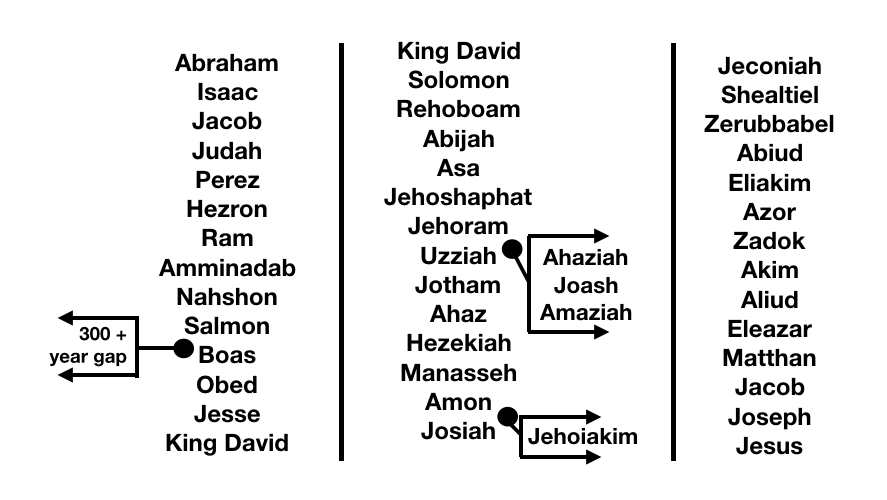Were the Gospels anonymous?
/The majority of modern New Testament scholarship today believe that the canonical Gospels (Matthew, Mark, Luke, and John) were originally penned and circulated anonymously. The thinking being that these documents were what is sometimes referred to as being “formally anonymous,” in that, if you removed the “Gospel According to …” title from the front page and remained with the content you would not necessarily know who the author was. New Testament scholar Rudolf Pesch notes in his commentary on the Gospel of Mark that the “Gospel of Mark was without doubt published anonymously… all inscriptions and subscriptions in the Gospel manuscripts are late.” As Richard Backham notes:
“The assumption that Jesus traditions circulated anonymously in the early church and therefore the Gospels in which they were gathered and recorded were also originally anonymous was very widespread in twentieth-century Gospel scholarship. It was propagated by the form critics as a corollary to their use of the model of folklore, which is passed down anonymously by communities. The Gospels, they thought, were folk literature, similarly anonymous. This use of the model of folklore has been discredited… partly because there is a great difference between folk traditions passed down over centuries and the short span of time — less than a lifetime — that elapsed before Gospels were written. But it is remarkable how tenacious has been the idea that not only the traditions but the Gospels themselves were originally anonymous.”
(Bauckham, Richard, Jesus and the Eyewitnesses: The Gospels as Eyewitness Testimony (Grand Rapids, MI: Eerdmans, 2006), 300.)
The tenaciousness that Bauckham mentions was indeed the reality of twentieth century New Testament scholarship. This of course is not limited to the past century, as testified by Pesch’s statement. However, the confidence of scholars like Pesch I believe exceeds what the evidence actually indicates. To say that it is “without doubt” that Mark was published anonymously is a very big statement given the fact that the evidence for it seems to be mixed.
This is not to say that Pesch and the majority of scholars’ assertions regarding Gospel authorship and anonymity could not be true. It could be. Majority views are important, and so, if one is going to make an assertion to the contrary of the majority view there better be good reason and sufficient evidence pointing towards that case. The question then is where does the preponderance of evidence point when it comes to Gospel anonymity and what should our conclusions be from said evidence?
What if they were anonymous?
Here’s the reality: if the Gospels were penned anonymously not that much would truly be impacted. A good many works from antiquity are formally anonymous. Other documents within the Christian Scriptural canon are anonymous. 1st and 2nd Chronicles and 1st and 2nd Kings from the Old Testament or the book of Hebrews from the New Testament, all formally anonymous. Not knowing the identity of the author of these books in no way jeopardizes their authority or credibility. From outside the Scriptures themselves we have the works of Philo of Alexandria, the famous Jewish thinker from the first century BC, are written with no formal mention of the author’s name within the document. If the Gospels were written in this way it would not jeopardize the reliability of their content. There are many internal and external methods of verification to identify the biblical Gospels as early, eyewitness-based accounts of the life of Jesus of Nazareth— with or without a direct ascription to who the author was or wasn’t.
No originals
We are also left with the reality that every writing from the ancient world falls into — we do not possess the original copies. The collection of writings we call the New Testament are approximately two thousand years old and the originals documents that the authors penned have been lost to the sands of time. With the loss of the originals we also have the disappearance of any first-hand evidence that they were or were not titled with the authors name. For this reason it cannot be known whether Matthew, Mark, Mark, Luke, or John inscribed a title to his Gospel account or not.
Author identities
It cannot be discounted that at least two of the Gospel accounts, Mark and Luke, have traditional ascription to non-disciples. If the Gospels did circulate anonymously in their earliest forms then why eventually assign names of particularly unimpressive characters to them? Why not vouch for and chose individuals who had early and widely accepted notoriety as key individuals within the Jesus community? Neither Mark nor Luke had an outstanding reputation as particularly noteworthy individuals. Both individuals in their respective identification traditions have links to others. Mark’s Gospel is reported to have found his source material in Peter. Why not then call this account The Gospel of Peter? If a Gospel account is anonymous why then almost unanimously settle on Mark, the cousin of Barnabas, who deserted the first missionary journey with Paul and went home (Acts 13:13, 15:37-39)?
This could even be argued for Matthew, a character about whom almost nothing is known and whose only claim to fame (outside of penning the Gospel) is that he was a tax collector in the Gospel narratives. Tax collectors were not exactly the most popular of Characters in first-century Roman occupied Galilee. So to choose Matthew over and above other characters within the narrative seems odd. Why not select clearer heavy hitters? Why not associate the earliest narrative accounts of Jesus with weightier apostolic authority? Especially, and with particular note, to the other Gospels that start to pop-up in the second century and following which make explicit claims to the authorship of characters like Philip, Mary, Peter, and Thomas.
Why do any of that, unless of course, the traditional attributions were in fact the authors?
Consistency in Titles
The strongest evidence against traditional authorship being straightforward would be the earliest manuscripts themselves showing diversity in attribution of the author. For example, if we were to find multiple copies with the text of what we now call the Gospel of Matthew with a different title, say, the text of the Gospel of Matthew with a heading of the Gospel of Peter, or the Gospel of John, then this would be warrant for pause. The problem however, is that we find no such thing. There are no competing claims of titled authorship in any of the manuscripts that survive with a title heading. In every single text that we have where the beginning or the ending of the work survives (the two places we find such titled inscriptions), we find the traditional authorship assigned.
These surviving copies are rare, granted, but not unprecedented. P75, for example, which dates somewhere in the mid to late second century, on leaf 47 (recto) has a very clear “εὐαγγελίον κατα Λουκᾶν” (“Gospel According to Luke”) at the end of the book (Luke 24:53).
Manuscript photograph of P75 courtesy of CSNTM’s Manuscript database. Original manuscript is housed in the Vatican Library (Pap. Hanna. 1).
Although not as nicely preserved in its incipit, another second century Gospel, P66, begins with the title “εὐαγγελίον κατα Ἰωάννην” (“Gospel according to John).
Manuscript photograph of P66 courtesy of CSNTM’s Manuscript database. Original manuscript is housed in at Foundation Martin Bodmery (Université de Genève in Geneva, P.Bodmer II).
All of our major Codices from the fourth and fifth centuries likewise include (at either the very beginning of the very end) an identifier of the author with the traditional name associated with the document. There has yet to be discovered a copy of a biblical Gospel with an inscription of a different name other than the traditional author.
The Manuscript Evidence: No Anonymous Gospels
Pitre, Brant, The case for Jesus: The biblical and historical evidence for Christ (New York: Penguin house Llc, 2016), 17.
What does all this mean?
Where this leaves us is with, in my estimation, relatively sound evidence to conclude that the names of the four canonical Gospels are indeed the authors. Although the early church testimony to these authors was not necessarily discussed in this particular blog, this early testimony also adds to the verification of the authors being the namesakes we associate with those particular documents. Of course it is theoretically possible that these documents were originally circulated anonymously, from the estimation of the evidence I do not believe that to be the case.
For more:

















![The Nag Hammadi codices in 1948. (Image adapted from Jean Doresse and Togo Mina, “Nouveaux textes gnostiques coptes découvertes en Haute-Egypte: La bibliothèque de Chenoboskion,” Vigiliae Christianae 3 [1949], 129-141, Figure 1; image appears cour…](https://images.squarespace-cdn.com/content/v1/5a21fbb649fc2b2179ec1ac4/1600789787902-XEFBW5LRNX7UJ5A8KNR9/Screen+Shot+2020-09-22+at+11.49.31+AM.png)




























